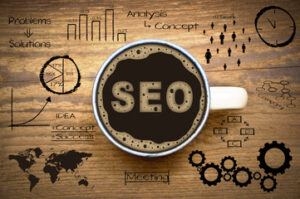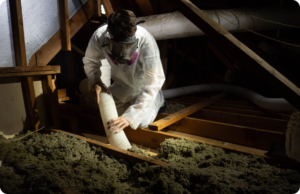Liquid Waste Disposal Perth involves safely and responsibly handling liquid waste materials. If not disposed of correctly, this type of waste can harm the environment, animals, and humans.
Several techniques are used to ensure proper disposal. These include incineration, deep-well injection, and more. Each has its benefits and drawbacks.

The cost of liquid waste disposal can vary depending on several factors, including the type of waste, volume, location, and frequency of service. Some companies may also charge extra fees for special services like hazmat cleanup and incinerating waste. These fees can add up quickly and significantly increase the overall disposal cost.
Liquid waste is typically stored in tanks, ponds, lagoons, and holding containers. These containers are made from plastics, metals, glass, and wood. Some are used for storage purposes, while others are designed for transport and disposal.
Many businesses and homeowners are concerned about the cost of disposing of their unwanted or hazardous waste. While the price of waste disposal can be high, there are ways to minimize costs. The most important thing to remember is that it pays to shop around. Look for a company that offers competitive prices and is reputable. Consider utilizing a waste management service that owns and operates its trucks. This can reduce transportation and other associated costs.
Another way to lower the cost of liquid waste disposal is to choose a method that doesn’t require special handling or processing. One of the greenest options is composting. This process involves reducing the water content of the waste and using microorganisms to turn it into organic fertilizer. This fertilizer is then used to help plants and crops grow.
Other green methods of disposing of liquid waste can be even more cost-effective. For example, facilities can use the wastewater treatment process to turn their waste into clean water. This water can then be used for irrigation, industrial processes, and other purposes. This method is also cost-effective and environmentally friendly.
Some communities are taking a different approach to garbage disposal by setting up public authorities that manage the collection, processing, and disposal of solid waste. In Phoenix, San Antonio, and Seattle, all garbage-related revenues and expenditures are accounted for separately from general city funds in an enterprise fund. This can prevent waste-related fees from being spent on non-related services and improve visibility of changes in fee levels.
Hazardous Waste
Liquid waste is a dangerous material that can harm people, animals, and the environment. It’s a byproduct of many different industries, including construction, water treatment systems, manufacturing, automotive garages, laboratories, and hospitals. It can also be a result of improper garbage disposal. Fortunately, there are steps that companies can take to ensure they’re not creating hazardous waste during the disposal process.
During liquid waste disposal, it’s important to separate nonhazardous and hazardous wastes. This helps reduce the risk of contamination, which can cause severe health issues for people and the environment. It’s also important to choose the right disposal method for each type of liquid waste.
Nonhazardous wastes are often turned into fertilizer through a process known as composting. This removes the water from the waste, leaving behind organic material that contains nutrients like nitrogen, potassium, and sodium. The fertilizer can then be used to help plants and crops grow. This is a green and ecofriendly way to dispose of liquid waste.
Hazardous wastes, on the other hand, must be handled with care. These wastes are highly toxic to humans and can cause a range of serious health issues if they’re not treated properly. When these wastes are disposed of improperly, they can contaminate natural habitats, disrupt the balance of aquatic ecosystems, and kill marine organisms. They can also seep into soil and contaminate groundwater and surface water sources, which people drink. This can lead to gastrointestinal illnesses, heavy metal poisoning, and other serious conditions.
While most types of liquid waste can be disposed of through sanitary sewer drains, some require special handling and disposal methods. For example, chemicals and solvents that contain volatile substances cannot be poured down the drain, nor can oil or other industrial fluids. These materials need to be processed, incinerated, or stored in sealed containers.
In addition to these procedures, it’s crucial to educate the public about the risks of hazardous liquid waste and how it can be handled safely. Public education campaigns and workshops are vital in disseminating this information. They can also help people make more responsible decisions when it comes to disposal.
Environmental Impact
The production and handling of liquid waste involves a number of different steps that must be followed to minimise environmental impact. Businesses must conduct thorough assessments to identify and categorise their liquid waste, which allows for the adoption of suitable disposal methods that abide by regulations. Depending on the type of waste, it may be required to use a variety of treatment techniques, including chemical, biological and incineration.
The environmental impact of improper liquid waste disposal can include water pollution, soil contamination, air pollution and other issues that affect the health and safety of people. The chemicals and pollutants present in liquid waste can contaminate water sources, such as rivers, lakes and groundwater, harming wildlife and disrupting ecosystems. This contaminant can also seep into the soil, destroying natural habitats and causing biodiversity loss. In addition, contaminated soil can cause sickness in animals and humans that ingest the food produced by plants that grow in it.
Liquid waste can also pollute the air, causing respiratory issues, skin irritations and other health problems. This can occur when liquid waste is disposed of improperly and seeps into the atmosphere, or when sewage systems overflow during heavy rainstorms. Air pollution from liquid waste is a huge global problem and can contribute to climate change by releasing excess gases into the atmosphere.
Finally, contaminated soil can kill plants and harm the environment, reducing biodiversity and reducing the value of land for homeowners and businesses alike. It can also make soil unsafe for animals and human beings to walk on, causing skin and respiratory problems.
Companies that generate liquid waste must follow strict environmental regulations to prevent pollution and water contamination, as well as ensure harmful chemicals do not pose a risk of explosion or fire. A failure to comply with these regulations can lead to a PR crisis and serious legal ramifications. Hefty fines may also be imposed, damaging a business’ reputation and causing revenue losses. Taking proactive measures to reduce the amount of waste generated, using environmentally friendly treatment processes and regularly inspecting storage areas can help to mitigate these risks.
Safety
The environmental hazards that can be caused by improper liquid waste disposal are significant. The chemicals and heavy metals found in some types of liquid waste can contaminate water sources, which could have negative impacts on aquatic life and our drinking water supplies. The health risks are also considerable. Improper handling and disposal of chemical pollutants and toxins can cause skin irritation, respiratory problems, and other long-term health issues.
In addition, if the wrong liquid is disposed of, it can cause fires that are difficult to extinguish, resulting in costly property damage and possible injuries or even death. Using the right liquid waste disposal methods prevents these dangers and ensures that your business complies with all relevant regulations.
Liquid non-hazardous wastes such as solvents and cleaning fluids are typically disposed of in special containers called disposal barrels or bins, which can be filled at your location before being taken away for disposal by a professional service. This method is ideal for companies that generate large volumes of waste on a regular basis as it allows you to save time and money while still staying compliant.
Medical waste, which includes bodily fluids such as blood and serum, is another type of hazardous liquid that must be disposed of properly. It is important to note that blood and other body fluids must be steam sterilized or chemically treated before being disposed of down a sanitary sewer with copious amounts of water. This will help to protect staff members and the public from potentially dangerous viruses and bacteria that can be transmitted through contact with such liquids.
Sanitary sewage and industrial sewage are both forms of liquid waste that are highly contaminated with heavy metals and chemicals, which makes them difficult to dispose of without severe environmental consequences. These types of sewage are often used for agricultural purposes or sent to industrial sludge wells where they are mixed with saltwater before being put into rivers and oceans.
It is also necessary to use proper storage methods for liquid waste to ensure that it does not leak or spill. Containers must be securely sealed and emptied prior to transportation for disposal. When storing liquid wastes, it is vital to segregate incompatible substances such as acids with caustics and flammables with oxidizers.








